LANDO, ORTENSIO (12 Ergebnisse)
Produktart
- Alle Produktarten
- Bücher (12)
- Magazine & Zeitschriften
- Comics
- Noten
- Kunst, Grafik & Poster
- Fotografien
- Karten
-
Manuskripte &
Papierantiquitäten
Zustand
Einband
Weitere Eigenschaften
- Erstausgabe (3)
- Signiert
- Schutzumschlag
- Angebotsfoto (10)
Land des Verkäufers
Verkäuferbewertung
-
Dal secondo Libro de' Paradossi, ciè sententie fuori del comun parere novellamente venute in luce [.].
Anbieter: Libreria Oreste Gozzini snc, Firenze, FI, Italien
Firenze, G.C. Sansoni, 1983, in-16 piccolo, br. editoriale, pp. [16]. copertine comprese. Paradosso XXVII: "Che l'opere del Boccaccio non sieno degne d'esser lette ispetialmente le dieci giornate". "Stampato per conto di G.C. Sansoni [.] come augurio agli amici per l'anno 1983".
-
Paradoxes / Paradossi (Bibliotheque Italienne) (French Edition)
Verlag: Les Belles Lettres, 2012
ISBN 10: 2251730354ISBN 13: 9782251730356
Anbieter: Gallix, Gif sur Yvette, Frankreich
Buch
Zustand: Neuf.
-
Novelle.
Verlag: In Lucca, presso Giovanni Baccelli, 1851
Anbieter: Gabriele Maspero Libri Antichi, Como, Italien
In-8° (cm. 20,1), legatura editoriale in mezza pelle scura e angoli, dorso a nervi con titolo in oro e filetti in nero, piatti e risguardi marmorizzati; pp. XLVIII 103 [1b] in stato molto buono (lievissime e sporadiche fioriture). Rosa incisa al frontespizio, eleganti capilettera figurati e finalini. «Con diligenza ristampate e corrette, precedute dalla sua vita». Edizione di soli 70 esemplari (nostro n. 12, in carta grave). In ottimo stato. (NA4).
-
Le forciane. Questioni nelle quali i varii costumi degli Italiani e molte cose non indegne da sapersi si spiegano di Filatete cittadino politopiense (Ortensio Lando) tradotte da Giovanni Paoletti
Verlag: Martinengo, Venezia, 1857
Anbieter: Coenobium Libreria antiquaria, Asti, Italien
In 8, pp. (8) + 62 + (1) di errata + (1b). Lieve strappetto al p. post. Tiratura di 12 esemplari su carta rosa per le nozze Van-Axel Castelli-Milinovich di questo volgarizzamento di un'operaÂdi Ortensio Lando, scrittore del Cinquecento, che descrive, a mo' di dialogo satirico, i costumi e il carattere delle diverse citta' italiane. Segue quindi un discorso sull'eccellenza delle donne. Molto curiosa la prima parte in cui sono esposti caratteri e bizzarie di varie citta' italiane: 'i Mantovani pelano gli ospiti, i Parmigiani li trattano cortesemente. Non troppo a lungo vengono accolti i forestieri dai Modenesi. i Napoletani sono famosi vendicatori delle ingiurie ed uguale inclinazione i Ferraresi e i Piacentini, di mal animo perdonano i Fiorentini. gli Astigiani facilmente sopportano qualunque ingiuria.'. Raro. ITA.
-
Paradossi cioe sententie fuori del commun parere novellamente venute in luce. - Confutatione del libro de paradossi. 2 in 1 volume.
Verlag: Venezia, Arrivabene, 1563., 1563
Anbieter: Antiquariat Thomas Rezek, München, Deutschland
8°. 86 num. ff., 2 (1 blank) ff. - 24 num. ff., with two different woodcut devices and several historiated initials in the text Contemporary vellum Gamba, Novelle 129 f.; Papanti 195; Grendler, Critics 231, 53. Lando s major work in which he undertakes to contradict all sorts of common opinions presenting arguments for paradoxes instead. In a way he does follow an old tradtion of philosophical argumentation when he claims for instance that poverty is better than wealth. His criticism of society, the church and authorities is though rather harsh in places and led to the title being put on the index of forbidden books. - Here with the rare and even more absurd confutation that has been published anonymously and in which Lando, as if he were an antagonist, attacks his own work and does his best to prove yet again the contrary of what he had just established. This again gives ample opportunity for criticism of society and the authorities. - Endpapers with old annotations, a little browning, somewhat dusty, first and last leaves with dog s ears and a little fraying binding wrinkled.
-
Paradossi cioe sentenze fuori del comun parere, ristaurate, & purgate con la presente nova impressione. Opera non men dotta, che piacevole.
Verlag: Per Comin Ventura,, In Bergamo,, 1594
Anbieter: Studio Bibliografico Benacense, Riva del garda, Italien
Cm. 19, cc. (4) 64. Marca tipografica al frontespizio, testate e bei capolettera istoriati. Legatura strettamente coeva in piena pergamena floscia. Sguardie assenti ed una leggera e chiara gora a poche carte centrali, peraltro esemplare genuino, marginoso ed in ottimo stato di conservazione. Ex libris. Rara edizione dei "Paradossi" in cui vengono proposti solo i primi 17 sui 30 presenti nelle precedenti edizioni (Lione 1543, Venezia 1544). Cfr. Melzi, II, p. 310.
-
Paradossi cioe, sententie fuori del comun parere, novellamente venute in luce.
Verlag: Venezia, , 1544., 1544
Anbieter: Antiquariat Thomas Rezek, München, Deutschland
Erstausgabe
8°. 104 (recte 106) num. ff., 2 ff., with woodcut printer s device and several historiated initials Contemporary limp vellum Adams L 119; Gamba, Novelle 129 f.; Papanti 194. Rare second edition of Lando s major work, published the year before in Lyons, France. Although by the time this first Italian edition came out Lando was employed by a cardinal, his anticlerical ciriticism is not mitigated here. As the title announces he undertakes to contradict all sorts of common opinions presenting arguments for paradoxes instead. In a way he does follow an old tradition of philosophical argumentation when he claims for instance that poverty is better than wealth. His criticism of society, the church and authorities is though rather harsh in places and let to the title being put on the index of forbidden books. In the fourth paradox for example he argues that it is better to be blind than able to see the corruption and misery of Italy. ".
-
Sette Libri de Cathaloghi a' varie cose appartenenti, non solo antiche, ma anche moderne: opera utile molto alla historia, et da cui prender si po materia di favellare d'ogni proposito che ci occorra.
Verlag: In Vinegia, appresso Gabriele Giolito de' Ferrari, e fratelli, MDLII (MDLIII in fine), (Venezia, Giolito 1552-1553),, Venezia, 1552
Anbieter: Libreria Antiquaria Pregliasco, Torino, Italien
Zustand: molto buono. in-8, pp. 567, (1), legatura '700 in p. pergamena, cornice floreale impressa in oro ai piatti, titolo e fregi al dorso. Impresa editoriale al titolo e altra diversa al verso dell'ultimo foglio, numerose belle iniziali istoriate. Prima ed unica edizione dell'opera del Lando (Milano ca. 1512 - Venezia 1553 ), medico, viaggiatore, scrittore satirico, fu membro dell' Accademia degli Elevati col nome di Tranquillo. L'opera contiene una quantità di interessanti aneddoti e di appunti storici e bio-bibliografici classificati in sette ''cataloghi'', ciascuno preceduto da una dedica ad un illustre personaggio e da un elenco degli argomenti (ad esempio catalogo dei belli, dei brutti, delle meretrici, dei ricchi, dei poveri.). Le liste sono divise tra narrazioni di fatti e nomi di antichi e di moderni personaggi; il Lando, in una lettera aggiunta in fine alla sua opera indirizzata a Lucrezia Gonzaga, si lamenta però di essere ''stato isforzato di tacere. i traditori, gli ingiusti, i perfidi, i crudeli.'' a lui contemporanei su suggerimento degli editori. Curioso che l'autore si sia registrato in diversi cataloghi tra cui quello degli ignoranti, degli infelici, dei brutti, degli iracondi. Interessante, rara edizione, oCAtttimo esemplare. Bongi, Annali Giolito, 371. STC Italian, 377. Manca ad Adams e Gamba. Book.
-
Couverture souple. Zustand: bon. R160015457: 1972. In-12. Broché. Bon état, Couv. convenable, Dos satisfaisant, Intérieur frais. 183 paes. . . . Classification Dewey : 840-Littératures des langues romanes. Littérature française.
-
Quattro libri de dubbi: con le solutioni a ciascun dubbio accommodate : la materia del primo e` naturale : del secondo e` mista (benche per lo piu sia morale) : del terzo e` amorosa : & del quarto e` religiosa.
Verlag: Gabriel GIolito de' Ferrari, Venice, 1552
Anbieter: Rodger Friedman Rare Book Studio, ABAA, Tuxedo, NY, USA
Erstausgabe
Zustand: Very Good. First edition. Octavo (16 cm); 318 [2] pages. Woodcut device on title page and on last page. Woodcut initials. Bound in recent vellum in period style, yapp edges, titled in ink on spine. Early 20th-century bibliographical note bound in. Marginal annotations in contemporary hand. Leaf a ii, the dedicatory letter, present in two states, the cancel addressed to Johann Jakob Fugger closing with Lando's name, and the original leaf addressed to Christoph Mielich and not signed, as usual. Small perforation in the cancel, affecting a word. Occasional light stains, darker on last leaf. References: Bongi I, 368; Melzi II, 391; BM Italian, 377 (1556 ed.); Fontanini, II, 117. The title promises four sets of "questions and their solutions," and indeed that was the plan. Lando wrote Q&A on four topics: medical questions (including dietary and aging functions), ethical questions, questions about religion, and questions about love and sex. It was the love and sex part that raised the eyebrows of the censors, and neither Lando or his publisher Giolito could get permissions to print it as the book was going to press. As Giolito himself declares in a postscript to the reader: "I promised you four books of doubts, but since I haven't yet been granted a license for the doubts about love, I'm forced to give you only three. Be well and enjoy as much of the book as I could give you." (The license came later, and the text appeared in later editions.) This unfinished text with its publisher's apology represents a fascinating birthmark on the 16th-century book trade.The Q&A ranges over hundreds of topics, calling upon the author's medical training (much involved with the humors and temperaments associated with various organs, objects, and creatures), his classical erudition, and his training in the Augustinian order. The three sections together provide comprehensive insight into 16th century medicine and popular religious and moral thought.The odd matter of two versions of the dedication page, leaf A ii, is not easily explained. We suspect (with some justification) that Lando sought patronage for the same work in different locations, knowing that Protestant Germany rarely spoke with Catholic Italy and vice versa. He might have found different backers in different markets. We know that to be the case with at least one other book of Lando's, the "Sermoni Funebri" (1549), where some copies are dedicated to Fugger and others to Niccolo degli Alberti. That case is known and recorded. We find no recorded instance of the alternate dedication of "Quattro libri dei dubbi" to Fugger, and no record of the author being identified by signing the dedication letter in any other copy. The "Quattro libri de dubbi" was quickly translated into French (Lyon, 1558) and by William Painter into English, entitled "Delectable demaundes and pleasaunt questions, with their severall aunswers." (1566, and again 1640).
-
Lettere di molte valorose donne, nelle quali chiaramente appare non esser ne di eloquentia ne di dottrina alli huomini inferiori.
Verlag: Gabriel Giolito de' Ferrari 1548-49, Venice, 1548
Anbieter: Rodger Friedman Rare Book Studio, ABAA, Tuxedo, NY, USA
Erstausgabe
Zustand: Very Good. First edition. Octavo (17cm); 161 [3] leaves (including final blank). Printer's device on title page and on verso of last leaf. Woodcut initial H on f.2 populated with racquetball players, and woodcut initial D on f.3 by the figure of a woman petting a boar. Italic and Roman type. Slight yellowing, light water stain to some lower outer corners. A very good copy in c.1750 polished vellum, gilt-lettered morocco label to spine. C16 underlining and marginalia. Occasional scattered foxing. References: Adams, L-562; Bongi I, 213-214; BM Italian, 376; Melzi II, 115. See also, Meredith K. Ray, "Writing Gender in Women s Letter Collections of the Italian Renaissance" (Toronto, 2009); Serena Pezzini, "Dissimulazione e paradosso in Ortensio Lando," in "Italianistica" 31:1 (2002) pp. 67-83; Natalina Bellucci, "Lettere di molte valorose donne.e di alcune pettegolette, ovvero: di un libro di lettere di Ortensio Lando," in Quondam, ed., "Le carte messaggere: rhetorica e modelli di communicazione epistolare."(Rome, 1981) pp. 255-76. The eccentric, peripatetic humanist Ortensio Lando was never comfortable with the noble courtesies of his Renaissance world. During his lifetime (ca. 1510-ca. 1559), he was in the top tier of Italian public intellectuals, but unlike his still-famous peers (Dolce, Sansovino, Bembo) he refused to buckle down. He attached himself to Rabelais s circle in Lyon (he was especially close with Étienne Dolet), while he worked in Gryphius s print shop there. He rambled on to Erasmus s Basel, and then to Germany, and returning to Italy he drifted through various Italian university towns (from Lucca, to Pisa, to Trent). He spent about ten years in Venice, and died, probably in Naples, in the late 1550s. Sometimes he published under his own name, but he frequently used pseudonyms or indeed no name. Despite this unsettled existence, he liked to call himself "Tranquillo." Lettere di molte valorose donne pretends to be a collection of model letters written by women to other women, demonstrating (in the context of the "querelle des femmes") that women are in no way inferior to men in eloquence and education. Topics range widely, embracing the commonplaces but with the addition of women s issues such as marriage, childbirth, the struggle for education, and the attractiveness of men, or lack thereof. The text seems to provide an intimate glimpse into a female network in which advice and comfort are shared. Authorship of Lettere di molte valorose donne puzzles scholars to this day. Published by the powerful Venetian house of Gabriel Giolito de Ferrari, there is no attribution on the title page or in the front matter. Lando is only mentioned in the gratulatory verses at the end of the book, where his famous peers, Dolce, Aretino, Sansovino, and Pestalossa, celebrate him for the "copious sweat and considerable personal expenses" that he put into compiling the book. By the end of the 19th century, most scholars agreed that Lando wrote the entire text, every letter, perhaps even the gratulatory verses. Recent scholarship, less sure, takes the view that Lando wrote most of it, certainly the passages attributed to fictional women, but that some of the letters were written in collaboration with Lucrezia Gonzaga, and several others were written authentically and then edited for style and content by Lando. Whether the text is wholly a product of a man impersonating the voices of women, or whether it consists of women s voices filtered through a man s literary sensibilities, the volume remains an important document of Renaissance images of women, in the guise of women speaking intimately with each other. Ortensio Lando is shockingly underrepresented in North American academic libraries. Even his greatest success, I paradossi, which informed Rabelais s Tiers Livre, and which Charles Estienne later translated into French and published, appears to be absent from University libraries in its first edition (Lyon, 1543). Copies of Lettere di valorose donne, despite its richly pertinent text, are hardly more numerous. This copy, in an authentic binding, is an important piece of the puzzle of our early modern heritage.
-
Lettere [.] con gran diligentia raccolte, et a gloria del sesso Feminile nuovamente in luce poste
Verlag: Venezia, [Gualtiero Scoto], Venezia, 1552
Zustand: Mediocre (Poor). 8vo. 328, (8) pp. A-X8 (X8 is a blank). With the printer's device on the title-page. Contemporary limp vellum.Basso, pp. 169-170; Edit 16, CNCE 32716; Quondam, p. 298; L. Gonzaga, Lettere con appendice di nuovi documenti, R. Bragantini & P. Griguolo, eds., (Rovigo, 2009), p. XXXIII. FIRST EDITION dedicated by the editor, Ortensio Lando, to Pietro Paolo Manfrone, governor of Verona (Venice, September 30, 1552).?La dedica a Pietro Paolo Manfrone, governatore di Verona, delle Lettere di Lucrezia Gonzaga di Gazzuolo, pur non essendo firmata è sicuramente di Ortensio Lando. La maggior parte dei commentatori ha ritenuto che tutto l'epistolario, in verità, fosse in tutto o in parte opera del letterato (come lo è, del tutto o in parte, la raccolta di Lettere di molte valorose donne), ma nessuno è riuscito finora a produrre prove definitive a sostegno di una tesi o dell'altra. In ogni caso è evidente che il dedicatario del volume è stato scelto in quanto parente della Gonzaga; l'unico aspetto della sua personalità che viene ricordato nella dedicatoria è l'ammirazione per la ?prontezza d'ingegno' e la ?tenace memoria' della Gonzaga. Forse il richiamo alla famiglia Manfrone fin dalla dedicatoria serve ad attirare l'attenzione sulle vicende riguardanti il marito di Lucrezia, Giampaolo Manfrone, condottiero a servizio della repubblica di Venezia catturato e condannato a morte dal Duca Ercole II d'Este, condanna poi commutata nel carcere a vita (e in carcere Manfrone morì nel 1552). Per il resto, la dedicatoria non sembra mirare ad ottenere specifici benefici, se non, nel caso di apocrifia della raccolta, una presunta legittimazione dell'autenticità dell'opera? (C. Schiavon, Una via d'accesso agli epistolari. Le dediche dei libri di lettere d'autore nel Cinquecento. Prima parte, in: ?Margini. Giornale della dedica e altro?, 3, 2009, pp. 27-28).?Recueil de 311 [i.e. 312] lettres dont les thèmes s'entrelacent ou, parfois, se condensent en séries de 2 à 10 lettres. Les événements relatés rendent sensible un ordre chronologique de l'ensemble; cependant, les lettres datées ne portent que le lieu, le jour et le mois, jamais l'année. Les principaux destinataires sont Ortensio Lando secrétaire de Lucrezia (33 l.), Isabella Gonzaga sa soeur (14 l.). Les écrivains destinataires de lettres (M. Bandello, R. Corso, L. Dolce, O. Lando, G. Muzio, G. Parabosco, G. Ruscelli, B. Tasso) et d'autres simplement cités (L. Bonfadio) firent tous une place à la forme épistolaire dans leur oeuvre. Sujets variés mais dominés par des préoccupations morales et religieuses, par la captivité et la mort de l'époux de Lucrèce, G.P. Monfrone condottiere (33 l.), par les rapports affectueux de l'épistolière avec O. Lando à qui est adressée la dernière lettre et qui fut supçonné d'être l'auteur du recueil et de la dédicace? (J. Basso, Le genre épistolaire en langue italienne (1538-1662). Répertoire chronologique et analytique, Roma & Nancy, 1990, I, p. 170).?Like Ortensio Lando's Lettere di molte valorose donne, the Lettere della? donna Lucrezia Gonzaga seem initially to locate themselves within the defense of women genre. As in the Valorose Donne, this laudatory intent is made evident on the frontispiece, which declares that the letters have been published for the glory of all women: ?a gloria del sesso femminile? in luce poste'. In this case, however, it is the collected letters of a single, celebrated woman that are to reflect and promote women's literary skills [?] Yet, like the Valorose Donne, Gonzaga's collection raises complex issues regarding the epistolary construction of gender and notions of the woman letter writer. If the Valorose Donne provide an often paradoxical epistolary portrait of women that borders at points on parody, Gonzaga's Lettere function as a serious response to that ambiguous portrait of women's epistolary discourse [?] Gonzaga's letters, by contrast, are devoid. Book.


![Bild des Verkäufers für Dal secondo Libro de' Paradossi, ciè sententie fuori del comun parere novellamente venute in luce [.]. zum Verkauf von Libreria Oreste Gozzini snc](https://pictures.abebooks.com/inventory/md/md30964886748.jpg)
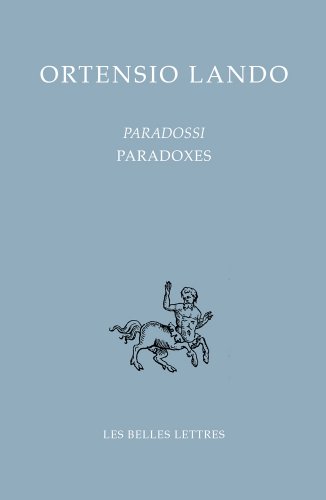
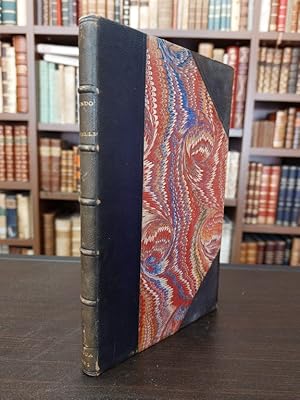

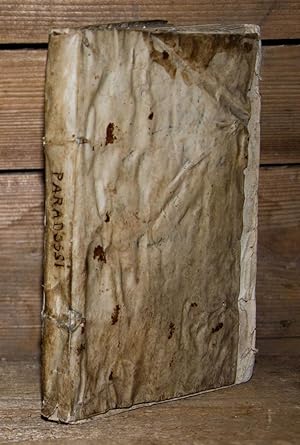
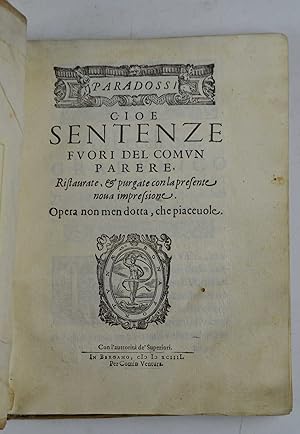
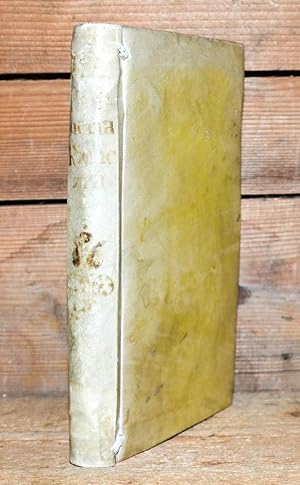
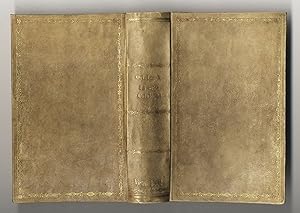
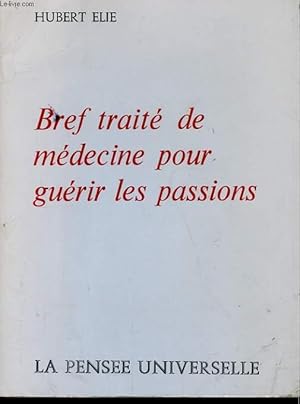
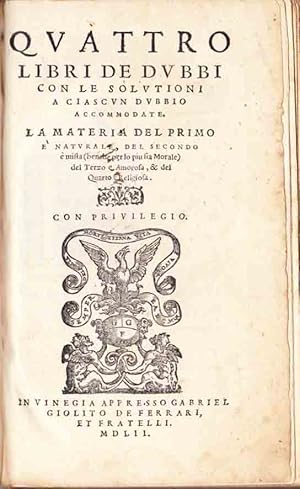

![Bild des Verkäufers für Lettere [.] con gran diligentia raccolte, et a gloria del sesso Feminile nuovamente in luce poste zum Verkauf von Govi Rare Books LLC](https://pictures.abebooks.com/inventory/md/md31462296696.jpg)